I am actually grateful that one skeptic brought up a woodpecker interpretation for sightings of apparent pterosaurs on the west coast of the United States . . . sort of. It kicked me off my comfortable couch, to search for more information about woodpeckers and other birds, and to learn about pterosaurs that perch and birds that do not perch. Thank you for that.
But the problems with that misidentified-bird conjecture are enormous. In fact, a careful examination of details is so damaging to the woodpecker interpretation that I will not even mention that skeptic’s name in this post; I have no desire to appear to insult any person.
So many skeptics have allowed themselves to be blinded! When referring to the sighting of an apparent pterosaur southeast of Griffith Park (May 13, 2013), one skeptic said, “This sounds like possibly another series of sightings of an outsized woodpecker similar to the Ivory-billed woodpecker.” But that remark appears to be a hasty response, without reference to the critical sighting of three “dragons” just ten weeks earlier and just a mile and a half to the north.
Since the skeptic said “series of sightings,” we will take this encounter in context, examining details in other sighting reports in California. But first consider this May 13th encounter and see if a woodpecker is responsible.
Pterosaur Sighting by Devin Rhodriquez, May 13, 2013
Compare these images chosen by Devin Rhodriquez to a large sketch of the Imperial Woodpecker wing shown further below:
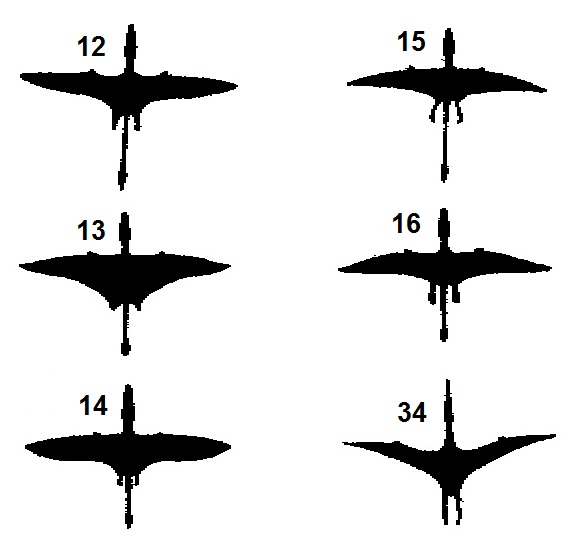
The above six silhouettes were chosen from about three dozen images of birds, bats, and pterosaurs. That is the same survey page that was used by Garth Guessman and David Woetzel, in their Umboi Island ropen expedition in 2004 (a few weeks after my own expedition there). Please take note: In that expedition, only two natives, of those natives on Umboi Island who had been given the survey, had a clear view of the shape of the ropen: Jonathan Ragu and Jonah Jim. Both of them chose #13, the Sordes pilosus, a long-tailed pterosaur.
This #13 is one of the images chosen by the American eyewitness Devin Rhodriquez (May 13, 2013, sighting near Griffith Park). Each of these six silhouettes is of a pterosaur; no bird image was chosen by this eyewitness.
Now let’s compare this encounter with the one ten weeks earlier, only about 1.5 miles to the north, also near Griffith Park. By the way, I choose these reports to be considered together because both eyewitnesses contacted me by email within weeks of each other and the locations were so close.
March 3, 2013, Pterosaur Sighting
Two months before Rhodriquez’s sighting of a “pterosaur,” another lady was driving on the I-5 Freeway in Los Angeles, also in a northbound lane. She observed three “dragons” gliding or soaring over that freeway, just east of Griffith Park and also near the Los Angeles River. The ratio of head, body, and tail length “was certainly not that of a bird. Their wings were long, angular and pointed and their tails had triangular points.”
That eyewitness was given the same survey form, and she said, “I would say #13 except their heads were bigger.” The Sordes pilosus was one of the six chosen by Rhodriquez and by the two eyewitnesses on Umboi Island. Is it a coincidence that all of those eyewitnesses chose that long-tailed pterosaur as having a similar wing-shape to what they had seen? No. Could everybody be observing woodpeckers that look like long-tailed pterosaurs? No. Where is even one sighting report of an apparent pterosaur that turned out to have been from a woodpecker?
It’s also no coincidence that so many Southern California pterosaur sightings are near storm channels or near the Los Angeles River (which is actually a giant storm channel). The creatures are nocturnal but on occasion a disturbance in daylight will awaken one of them, causing a daylight flight, resulting in a sighting.
Humans see poorly in the dark sky of night, so the many nocturnal flyovers go mostly unseen or unnoticed, especially when the creatures are flying at night through storm channels. And those flying creatures might indeed become extinct if they were foolish enough to avoid those channels where rats and possums and other yummy animals could be easily captured.
The March 3rd sighting, near Griffith Park, was almost at night: 6:10 a.m., but there was plenty of light for the eyewitness to see the strange appearance of three large long-tailed non-woodpeckers gliding over the freeway—without wing flapping.
June 19, 2012, Pterosaur Sighting: Lakewood, California
An earlier sighting in Los Angeles County, northeast of Long Beach—this might be partially what caused the skeptic to mention perching, but he gives few details about what he is referring to regarding perching. I have tied this Lakewood sighting to the two encounters near Griffith Park, so I assume the skeptic took notice of that.
The lady was observing the creature in her backyard as she was standing less than eighteen feet below it, as it perched on a telephone cable over a storm channel. The lady said that the creature “had [a triangle] on his tail, like a dragon.” She thought the tail was at least four feet long, maybe five feet. Keep in mind that the end of that tail was only about eighteen feet from the end of the lady’s nose, before the creature flew away from its perch. That was no woodpecker.
Irving, California, Pterosaur Sighting
Take the above in context with another encounter, this one southeast of Los Angeles County. The eyewitness told me that the creature he saw flying not far above the road on which he was driving was the same length as the width of that road. That means the apparent ropen was thirty feet long, for I later measured the width of that road myself, pacing it off with my own feet. No woodpecker, extinct or still living, ever attained a length of 30 feet, not even in the imagination of a skeptic.
When did the skeptic in question ever mention the estimated sizes of what eyewitnesses have reported to me? I don’t recall reading any of his comments in which he mentioned size, perhaps because of the sighting close to the University of California at Irvine in the summer of 2007. No woodpecker could have been misidentified with a size estimate like that. In addition, the eyewitness described the tail as about half that length, or about 15 feet. That was no woodpecker.
Perching Pterosaurs and Non-Perching Woodpeckers
Immediately after mentioning the woodpecker interpretation of pterosaur sightings in California, the skeptic said, “The creature which is reported as a pterosaur perches upright, which no kind of a pterosaur could do.” Well, that old generalization no longer applies, for we now know that one type of pterosaur could indeed perch upright, and that long-tailed variety just happens to be . . . yes, the same general type observed perching upright on a telephone line in Lakewood, California, on June 19, 2012: the long-tailed variety.
I believe woodpeckers are not perching birds, unless I have seriously mistaken what I have been reading lately about birds. I suggest the skeptic has failed to look deeply enough into this subject, but I accept correction if I have misunderstood woodpeckers.
In other words, the kind of bird the skeptic offers to us cannot perch but the Rhamphorhynchoid pterosaur observed perching last year in Lakewood is the type of pterosaur that could perch, according to fossils that show the opposing toe-digit on the foot. If that were not damaging enough to the proclamations of that skeptic, the main context of his blog post is regarding a sighting southeast of Griffith Park, on May 13, 2013, in which the creature was gliding or soaring over a freeway, not perching.
Woodpeckers in California
None of the eyewitnesses that I have interviewed, over the past ten years, to the best of my recollection, described the coloring of what they had seen as anything at all similar to the Imperial Woodpecker or the Ivory Billed Woodpecker. It seems to me that the skeptic who has suggested woodpeckers has ignored critical details that eliminate that bird and has distorted, in his own imagination, the head-crest concept.
.
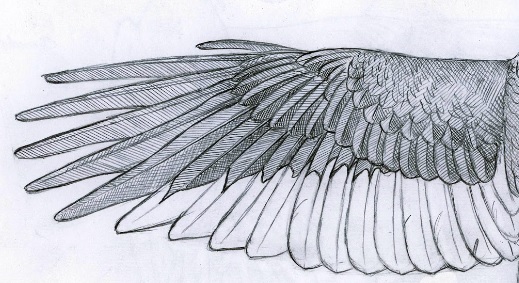
Wing of the Imperial Woodpecker
.
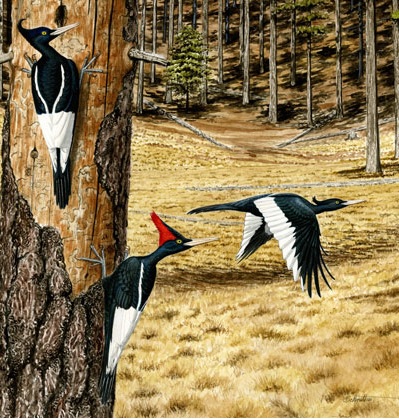
The Imperial Woodpecker
.
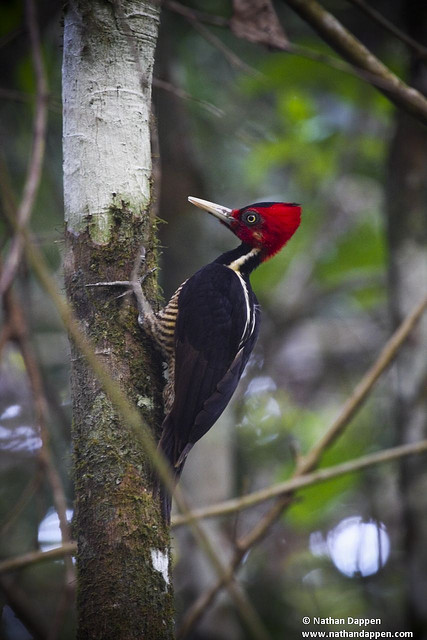
Ivory Billed Woodpecker
.
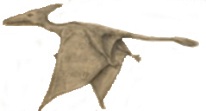
“Pterodactyl” drawn by the eyewitness Eskin C. Kuhn (Gitmo Pterosaur of Cuba)
.
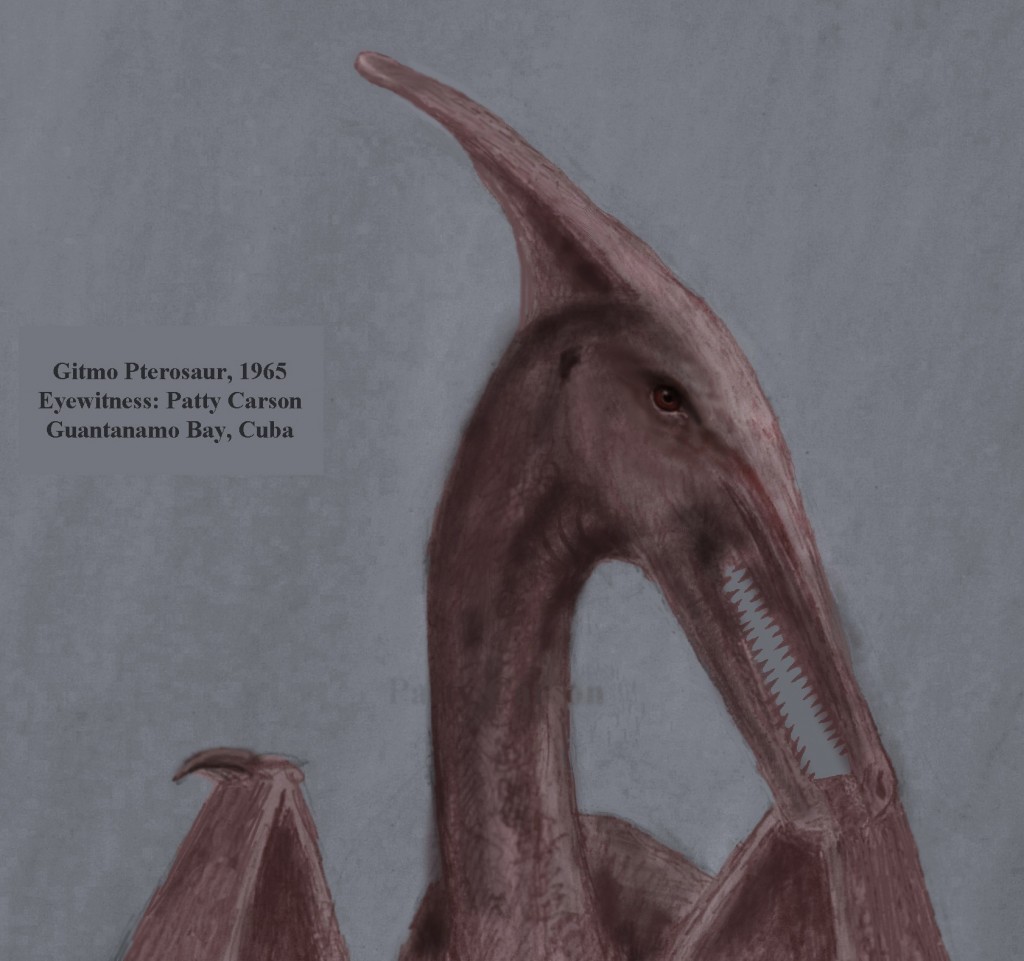
Sketch by the eyewitness Patty Carson (another Gitmo Pterosaur of Cuba)
.
Dragons Around Griffith Park in Los Angeles
Both observations involved a lady alone in a vehicle in a northbound lane of the Interstate-5 Freeway between Griffith Park and Glendale. Both eyewitnesses sent me an email soon after a sighting. Both believed no bird misidentification was involved.
Dragon Pterosaurs in Southern California
The eyewitness of the “Griffith Park dragons” first thought she was observing three non-living things flying over her car (she was driving north on the I-5 at about 6:10 a.m. on a Sunday). She assumed it was some kind of stunt, perhaps with kites, for the three “dragons” looked nothing like birds. When she saw the tails move slightly, she realized that they were alive.
.



Why do you keep capitalizing the specific name? It’s Sordes pilosus, not Pilosus. It’s basic zoology.
Thank you. I’m correcting it now.